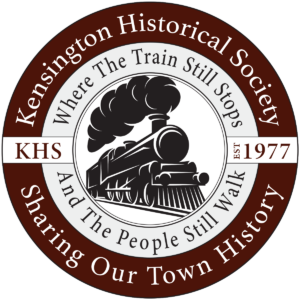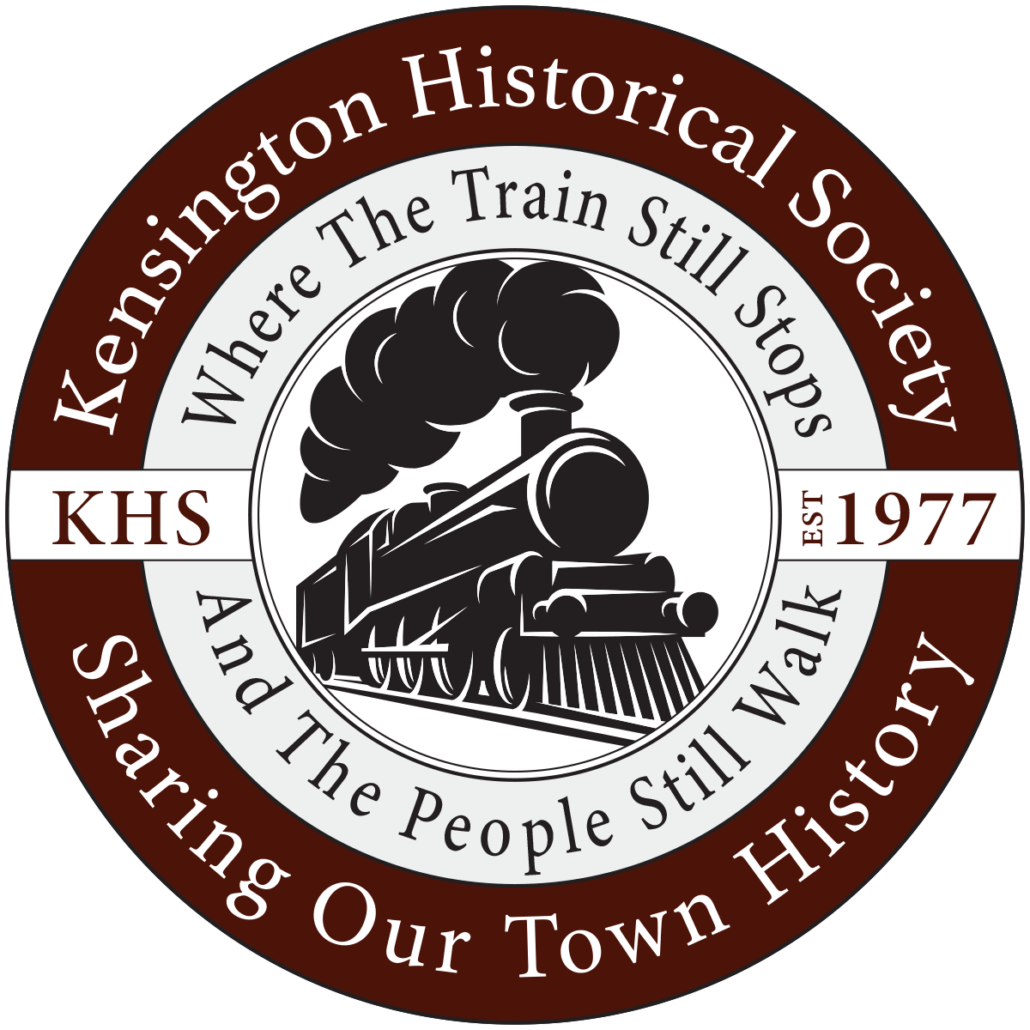
Contact Us
P.O. Box 453, Kensington, MD 20895
To request archival information, send an email to archives@tok.md.gov.
Office Hours
Visit the Archives by appointment.
In the earliest days of the known history of Kensington, the Piscataway and other Algonquin tribes made their homes in this area. The more warlike Susquehannock and Seneca often travelled through these parts as well, making their way along the Seneca Trail, the pre-colonial equivalent of Interstate 270. Toward the end of the 17th century, settlers began to move into the wilderness of central Maryland, including the area that later became Montgomery County. Around 1688-1689, Charles Calvert, the third Lord Baltimore, granted William Joseph, then his Deputy Governor of Maryland, the four thousand-plus acres known as Joseph’s Park, which today make up Kensington, Forest Glen, and Woodside. He also received at that time another large grant, The Hermitage, which is now Ken-Gar and Wheaton. The undulating hills of this area were drained by hundreds of small streams, including Kensington’s Silver Creek. These streams powered the mills that enabled the early development and the beginnings of a community.
Eight years after the end of the Civil War, in the spring of 1873, the Baltimore & Ohio Railroad inaugurated a line in the Potomac River Valley which ran from Washington D.C. to Point of Rocks, Maryland. When the first train came through on May 25, 1875, a small settlement was waiting to receive it. The railroad track crossed a dirt road on a farm owned by George Knowles. Trains stopped at this crossing, at that time known as Knowles Station.
In 1880, the community numbered about 75 residents, mostly farmers. Much of the early development occurred north of the railway tracks, where one of the first businesses, the Mannakee General Store, opened on a site that became Mizell’s lumber yard in the 1930’s. Development of the community intensified after Brainard Warner, a Pennsylvania native and later a Washington financier and real-estate developer, purchased 132 acres of farmland just south of the railroad tracks in 1890. Warner subdivided his newly acquired farmland and laid streets out in a unique, curvilinear pattern to create a new type of community convenient to the District of Columbia that was neither in the country nor a city, but an in-between place. He named his subdivision “Kensington Park” after the London garden district. By 1890, there were ten new subdivisions in the vicinity, the latest two being Davis to the north and the largest, Warner’s Kensington Park to the south. Warner built his own summer residence on the 4.5 acre oval at the heart of his subdivision. The railroad and post office adopted the name “Kensington,” as did the community in 1894, when the Town of Kensington was incorporated and Warner’s vision of a Victorian garden community became a reality.
Many of Kensington’s late 19th century residents commuted to work in Washington by rail. To accommodate the commuters, a railroad depot was constructed in 1891. Renovated in 1994, the station continues to serve Kensington commuters as it did more than 100 years ago.
In the 1890s, Brainard Warner and others organized a trolley company, the Kensington Electric Railway – known to residents as the “Toonerville trolley” – to supplement the railroad’s commuter service and to encourage year round residence in the community. The trolley line traveled along what is now Kensington Parkway to Chevy Chase, where it connected to the Capital Traction Line, which ended at l8th and U streets in Washington. The trolley ran from l895 to 1933, when it was replaced by bus service.
In the early 20th century, boardwalks for pedestrians lined some of Kensington’s dusty, unpaved streets, and the town had just begun to put in brick sidewalks. Oil lamps, smoky and dim, provided street lighting. Homes relied on well water; many had windmills or gasoline engines to pump water out of deep wells to attic storage tanks.
In 1914, a bond issue was approved for a municipal water and sewer system. Soon, Kensington could boast of having the latest engineering advances in its wells, pumps, and fire hydrants. A water tank at Summit and Detrick Avenues near Howard Avenue piped water to Kensington’s homes. An Italian work crew laid pipes so that sewage could be piped to vacant land on Kensington Parkway. A few years later, when Kensington’s water and sewer service was taken over by the Washington Suburban Sanitary Commission, the town gave the land to the Maryland-National Capital Park and Planning Commission with an agreement that a recreation area and playground would be created. Today, Kensington Cabin Park inhabits the site.
Until the 1920s, the town’s dirt roads were covered with leftover cinders from the railroad as a matter of course, until the State Roads Department paved Connecticut Avenue, including the stretch which is now Armory Avenue, from Chevy Chase Lake to where it ended at the railroad. During the 1930s, Kensington’s secondary roads were also black-topped.
Just as the railroad opened up much of the County for development in the late 19th century, the advent of the automobile and increasingly passable roads greatly increased the accessibility of the Kensington area for future development. After World War II, large tracts of land were turned into home developments in and around Kensington, resulting in an increase in both population and traffic congestion. Government workers moved to the area in droves, and the County’s population almost doubled between 1946 and 1951.
Kensington witnessed an explosion of commercial building in the 1950s. Lincoln Avenue, which crossed over the railroad, was linked to and became an extension of Connecticut Avenue as it curved west from Baltimore Avenue, crossed the railroad at Lincoln and was widened and extended to the north. The town’s Safeway grocery store was enlarged and moved up to face Connecticut Avenue, and the shopping area across Connecticut Avenue was developed, as was the area behind the firehouse. Several new commercial buildings were added along Plyers Mill Road west of Connecticut Avenue, which included a bowling alley. Two rows of one-story warehouses, which became mechanics’ shops and hot-rod clubs, such as the DC Dragons and Silver Spring Ramrods, were built. Auto repair and body shops and woodworking shops remain today in the area known as “Gasoline Alley.”
In the 1960s, Metropolitan Avenue lost all but one of its early homes to development as the commercial area expanded. On Howard Avenue, grocery and service stores were being replaced by antique shops. Through this period and into the 1980s, increasingly larger-scaled buildings were appearing.
By the 1970s, there was a dawning awareness that Kensington might lose the delicate balance between its small-town scale and history, which defined the community’s character, and powerful forces of growth fueled by society’s automobile-dominated lifestyle, with the attendant rise of ever-more distant suburbs and commuters passing through town on their way to and from Washington. The Kensington Historical Society was formed as a result, in order to preserve, and raise awareness about, the heritage of the town.
In 1980, through the efforts of the Kensington Historical Society, a portion of the town was placed on the National Register of Historic Places in recognition of its significance as a historic Victorian era community. In 1986, the Kensington Historic District was included on the Montgomery County Master Plan for Historic Preservation, thereby coming under the protection of the County’s 1979 Ordinance for Historic Preservation.
More than a century after its incorporation, Kensington retains its historic charm. Still preserved are the tree lined streets, graciously-situated homes nestled in a rolling landscape, and mature trees and gardens that hark back to Kensington’s early years, providing a uniquely characteristic setting for its buildings, both old and new. Residents prize the town’s historic character, its verdant uniqueness, and the affirmation of national and local recognition that this special historic town for which we are all stewards is worth preserving for future generations.
The term “Victorian” generally describes a group of architectural styles that were popular from the mid 19th to the early 20th centuries. Most Victorian styles share common characteristics such as asymmetric facades with contrasting textures, colors, and shapes, and steeply pitched roof lines.
Perhaps the most recognizable style of this time was the Queen Anne, popular between 1880 and 1910. Its features included irregularly shaped roof lines, protruding wings, gables, porches, windows, and towers. Exterior framing was typically ornamented with carved wooden posts, and brackets on porches. Patterned glass windows were fashionable.
Precursor to the Queen Anne, the Stick style was identifiable by deep overhangs with exposed rafters and brackets. Two dimensional “stickwork”, a pattern of horizontal, vertical, or diagonal boards, was often incorporated in the exterior wall design. When these two styles were combined it presented a heavier, more rustic style home. Wooden shingles covering entire exterior walls and roofs distinguished the Shingle style, with emphasis on the rough texture of the surface. Fieldstone often formed the foundations.
A simplified house form, known as Folk Victorian, had a more symmetrical facade and simple wood clapboard walls with little decorative detail. In the early 20th century, there was a return of interest in older architectural styles. Houses built in Dutch Colonial and Georgian styles were collectively referred to as Colonial Revival. Distinguishing features included symmetrical facades, boxlike structures, and centered front doors.
Kensington’s recognition on the National Register for Historic Places is in part because of its “park-like setting.” Individual private gardens in conjunction with the numerous public parks contribute to our Historic District’s description as a “Victorian Garden Suburb.” The private maintenance of these gardens, in conjunction with the creation and maintenance of public open spaces, has expanded the ambiance of the historic setting.
Kensington’s public parks are appealing to all ages for a variety of activities, and harmonize with the vision of Kensington as a garden suburb. There are parks with playgrounds, memorials, gardens, picnic areas, basketball and tennis areas, playing fields and even a street performance area, all helping to foster a greater sense of community.

P.O. Box 453, Kensington, MD 20895
To request archival information, send an email to archives@tok.md.gov.
Visit the Archives by appointment.
